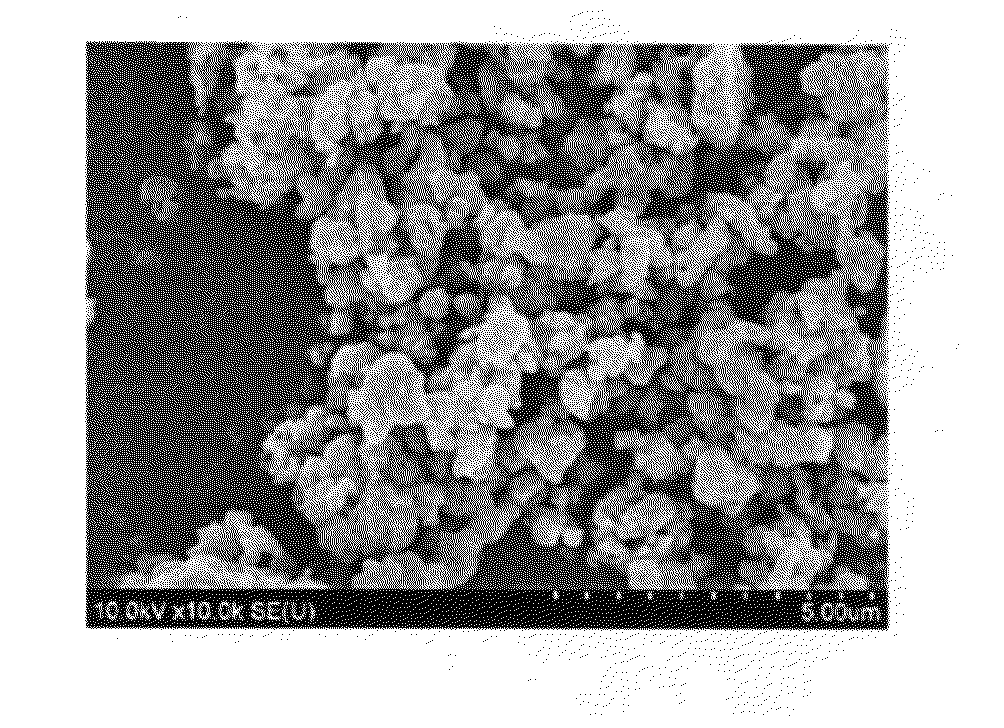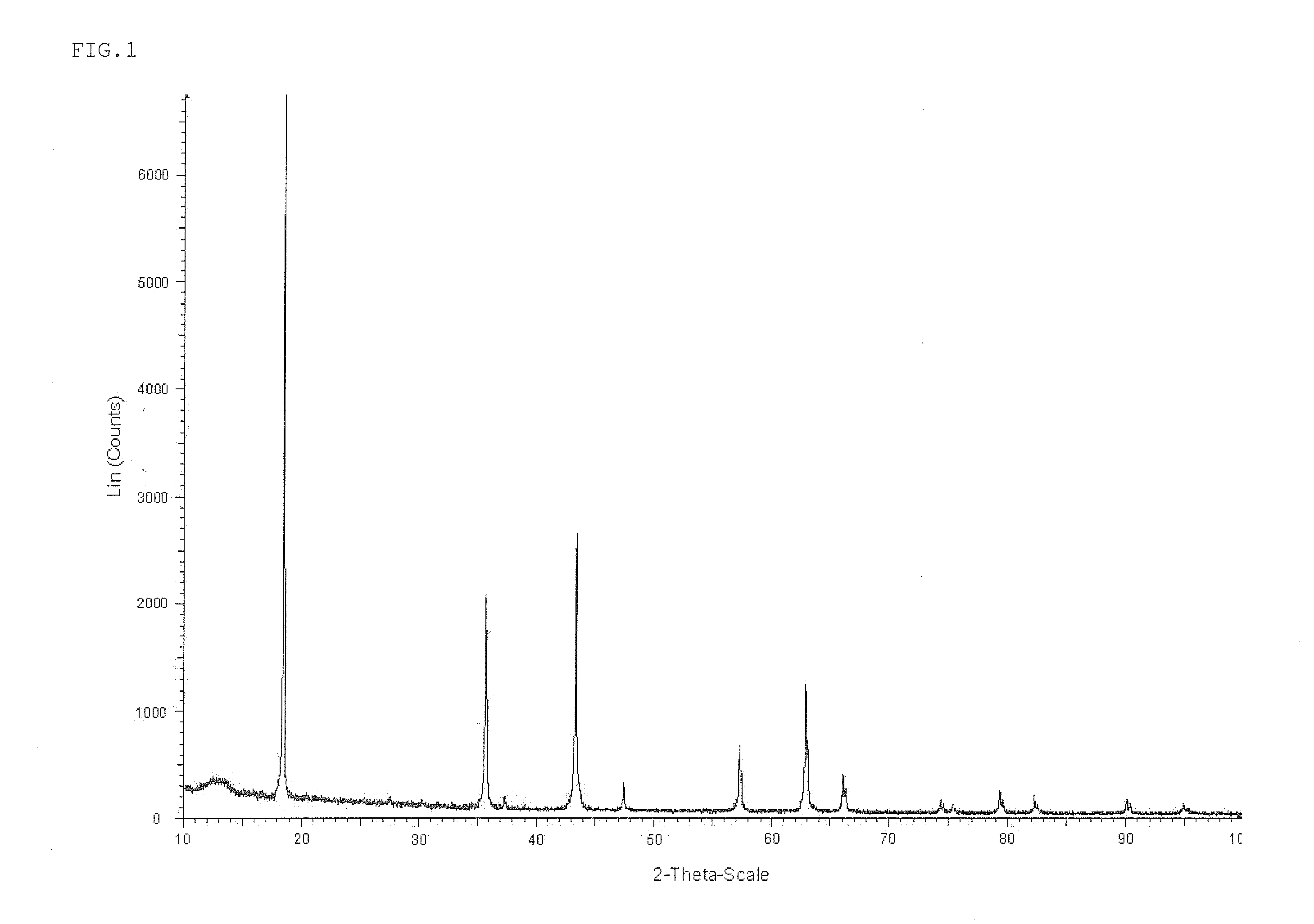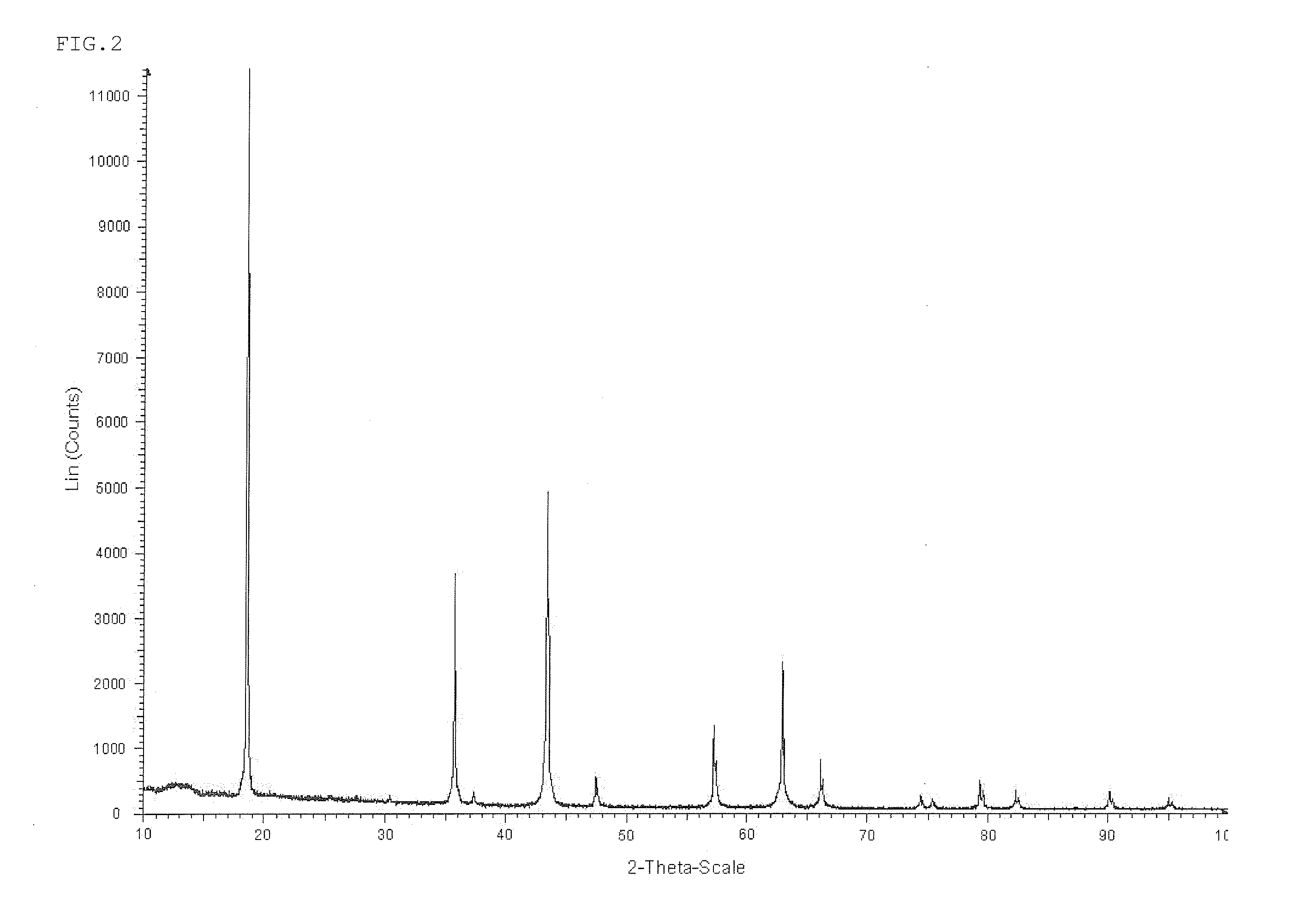Anode active material for lithium secondary battery and method for preparing the same
- Summary
- Abstract
- Description
- Claims
- Application Information
AI Technical Summary
Benefits of technology
Problems solved by technology
Method used
Image
Examples
example 1
Preparation of Lithium Titanate Material
[0100]Titanium dioxide (mean particle diameter of 5.2 μm, BET specific surface area of 29.8 m2 / g, rutilization ratio of 5.0% or less) obtained by a sulfuric acid method and lithium carbonate (Li2CO3, mean particle diameter of 8.2 μm) were mixed such that a molar ratio (Li / Ti) of lithium atoms in lithium carbonate to titanium atoms was 0.800, followed by wet-mixing. Then, the resulting mixture was baked in the air at 850° C. for 5 hours, cooled and disintegrated to obtain lithium titanate. The resulting lithium titanate was Li4Ti5O12 and the Li / Ti molar ratio was 0.800. The XRD analysis results of lithium titanate thus obtained are shown in FIG. 1.
[0101]In addition, the lithium titanate was present in the form of monodispersed particles. 100 of the particles were randomized and observed by SEM to obtain a mean particle diameter as 0.52 μm.
[0102]
[0103]Then, the lithium titanate thus obtained was dispersed in pure water such that a solid concentr...
example 2
Preparation of Lithium Titanate Material
[0106]Lithium titanate was obtained in the same manner as in Example 1.
[0107]
[0108]Then, the lithium titanate thus obtained was dispersed in pure water such that the solid concentration was 40%. Then, 2.85% by weight of magnesium sulfate based on the weight of Mg atom conversion with respect to the weight of lithium titanate was added and was dissolved in a slurry. Then, the mixture was wet mixed using a wet bead mill, until the mean particle diameter of solid in a slurry reached 0.8 μm to obtain an aqueous slurry. Then, the aqueous slurry was sprayed using a spray dryer whose inlet temperature was set at 250° C., to obtain an anode active material for lithium secondary batteries. The mean particle diameter of solid in the slurry was measured with a particle size distribution meter using a laser method.
[0109]
[0110]Then, the anode active material for lithium secondary batteries thus obtained was subjected to SEM analysis. As a result, it could ...
example 3
Preparation of Lithium Titanate Material
[0112]Lithium titanate was obtained in the same manner as in Example 1.
[0113]
[0114]Then, the lithium titanate thus obtained was dispersed in pure water such that the solid concentration was 40%. Then, 4.80% by weight of magnesium oxide (mean particle diameter of 0.5 μm), based on Mg in terms of atom with respect to lithium titanate was added. Then, the mixture was wet-mixed using a wet bead mill, until the mean particle diameter of solid in a slurry reached 0.3 μm to obtain an aqueous slurry. Then, the aqueous slurry was sprayed using a spray dryer whose inlet temperature was set at 160° C., to obtain an anode active material for lithium secondary batteries.
[0115]
[0116]Then, the anode active material for lithium secondary batteries thus obtained was subjected to SEM analysis. As a result, it could be confirmed that the anode active material was composed of secondary particles in which primary particles of lithium titanate were aggregated. In a...
PUM
 Login to View More
Login to View More Abstract
Description
Claims
Application Information
 Login to View More
Login to View More - R&D
- Intellectual Property
- Life Sciences
- Materials
- Tech Scout
- Unparalleled Data Quality
- Higher Quality Content
- 60% Fewer Hallucinations
Browse by: Latest US Patents, China's latest patents, Technical Efficacy Thesaurus, Application Domain, Technology Topic, Popular Technical Reports.
© 2025 PatSnap. All rights reserved.Legal|Privacy policy|Modern Slavery Act Transparency Statement|Sitemap|About US| Contact US: help@patsnap.com



